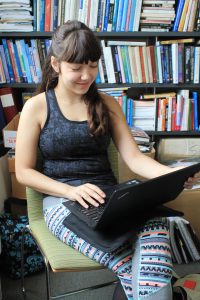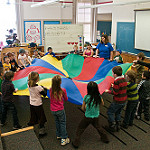How does the way we move our bodies influence the way we think? This summer, I worked to answer this question, specifically as it applies to education. Our bodies are a rich source of information that most people rarely attend to. By listening to our bodies and learning more about our bodies’ natural patterns, we can change the way we function, both in academia and beyond.
Movement can help students master new material and learn greater social-emotional skills. Through the implementation of these techniques, students will become the agent of their own learning and discovery, which in turn will allow them to better self-regulate. However, movement in the classroom does not only help students. Teachers can also reap great benefits from incorporating movement into their workday. In fact, teacher movement was one of the primary focuses of my work this summer. Through mindful movement, teachers can teach more effectively and more easily relate to their students. Further, these techniques may lessen the emotional stress inherent in a teacher’s job and may enable the teacher to feel a greater sense of self-efficacy, which in turn could decrease the rate of teacher burnout.
The goal of the  work I’ve done this summer is to eventually write a book discussing how to integrate movement into primary education. This book would be addressed to teachers and have an empirical basis. Our book would draw from a variety of movement disciplines, including yoga, mindfulness training, and the Feldenkrais method. Over the course of the summer, we’ve begun the process of compiling a book proposal to submit to publishers. A complete book proposal includes a table of contents with chapter summaries, sample chapters, and a detailed cover letter. In pursuit of this goal, I researched topics ranging from the effects of playful learning to mindfulness interventions in the classroom. I also reflected on my own past movement experiences and brainstormed ways those experiences could be translated into the classroom.
work I’ve done this summer is to eventually write a book discussing how to integrate movement into primary education. This book would be addressed to teachers and have an empirical basis. Our book would draw from a variety of movement disciplines, including yoga, mindfulness training, and the Feldenkrais method. Over the course of the summer, we’ve begun the process of compiling a book proposal to submit to publishers. A complete book proposal includes a table of contents with chapter summaries, sample chapters, and a detailed cover letter. In pursuit of this goal, I researched topics ranging from the effects of playful learning to mindfulness interventions in the classroom. I also reflected on my own past movement experiences and brainstormed ways those experiences could be translated into the classroom.

